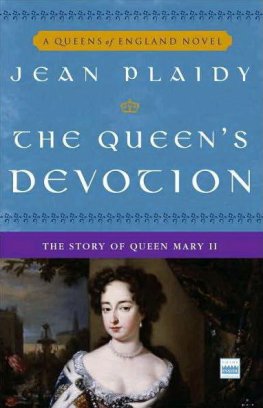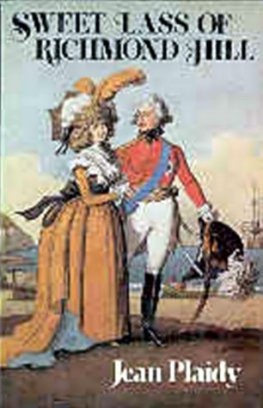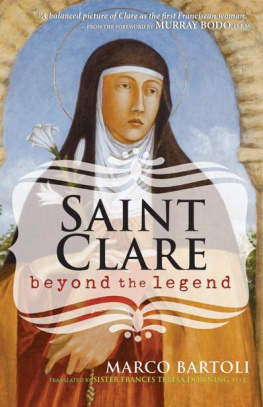Jean Plaidy
The Legend of the Seventh Virgin
Two days after the bones of the walled-up nun were found in St. Larnston Abbas, the five of us were together. There were Justin and Johnny St. Larnston, Mellyora Martin, Dick Kimber and myself, Kerensa Carlee with as grand a name as any of them, for all that I lived in a cob-walled cottage and they were the gentry.
The Abbas had belonged to the St. Larnstons for centuries; and before they had owned it, it had been a convent. Impressive, built naturally of Cornish stone, its battlemented towers were pure Norman; it had been restored here and there and one wing was obviously Tudor. I had never been inside the house at that time but I knew the surrounding district very well; and it was not the house which was unique, for, interesting as it was, there were many more in Englandand even Cornwallas interesting and as antiquated. It was the Six Virgins who made St. Larnston Abbas different from all the others.
The Six Virgins was the name by which the stones were known. If the legend could be believed they were misnamed because, according to that, they were six women who precisely because they had ceased to be virgins had been turned into stones. Mellyora's father, the Reverend Charles Martin, whose hobby was delving into the past, called them the menhirs "men" being the Cornish word for stone and "hir' for long.
The story about there having been seven virgins came from the Reverend Charles, too. His great-grandfather had had the same hobby, and one day the Reverend Charles found some notes which had been tucked away in an old trunk and among these was the story of the Seventh Virgin. He had had it printed in the local paper. It made quite a stir in St. Larnston, and people who before had never bothered to glance at the stones, then went to stare at them.
The story was that six novices and a nun had ceased to be virgins and the novices were driven from the convent. As they left they danced in the nearby meadow to show their defiance and because of this were turned into stones. In those days it was believed that good luck was brought to a place if a living person was what they called "walled-up," which meant putting that person into a space in the wall and building round her, leaving her to die. The nun, having sinned more deeply than the others, was condemned to be walled-up.
The Reverend Charles said the story was nonsense; the stones must have been in the meadow years before the convent was built for, according to him, they were older than Christianity. He pointed out that there were similar ones all over Cornwall and at Stonehenge; but the people of St. Larnston liked the story of the Virgins best, so that was the one they made up their minds to believe.
They had been believing it for some time when one of the oldest of the Abbas walls collapsed and Sir Justin St. Larnston ordered that it should be immediately repaired.
Reuben Pengaster was working on the spot at the moment when the hollowed wall was exposed and he swore he saw a woman standing there.
"She was there one second," he insisted. "Like a nightmare she were. Then she were gone and there was nothing but dust and they old bones."
Some said that was the start of Reuben's being what was called in Cornwall piskey-mazed. He wasn't mad but he wasn't quite like other people. He was slightly different from the rest of us, as though, it were said, he'd been caught by the piskeys one dark night, and having become piskey-mazed had stayed like that.
"He looked on what weren't intended for human eyes," they said. "It's made him piskey-mazed."
But there were bones in that wall, and it was said by experts that they had belonged to a young woman. There was fresh interest in the Abbas, just as there had been when the Reverend Charles had had his piece printed in the paper about his menhirs. People wanted to see the spot where the bones had been found. I was one who wanted to see.
The day was hot and I left the cottage soon after midday. We had had a bowl of quillet eachJoe, Granny Bee, and myselfand for anyone not Cornish who doesn't know what quillet is, it's peas made into a sort of porridge. It was used a great deal in Cornwall during the hungry times because it was cheap and sustaining.
Of course they wouldn't have quillet at the Abbas, I was thinking as I went along. They would be eating roast pheasant off gold plates; they would be drinking wine out of silver tankards.
I knew very little of how the quality ate, but my imagination was vivid; and I could clearly see the picture of the St. Larnstons at their table. In those days I was continually comparing my life with theirs; and the comparison angered me.
I was twelve years old, black-haired and black-eyed; and although I was very thin, there was something about me which was already causing men to look twice at me. I did not know very much about myself, not at that time being given to self-analysis, but there was one characteristic of which I was aware even then: I was proudwith that sort of pride which is one of the seven deadly sins. I walked in a bold and haughty way as though I wasn't one of the cottage people but belonged to a family like the St. Larnstons.
Our cottage stood apart from the others in a small copse, and I felt that made us apart, although ours was exactly the same as the others; it was merely a rectangle with walls of whitewashed cob and a thatched roof-about as primitive as a dwelling could be. Still, I was constantly assuring myself, ours was different, just as we were different. Everyone would admit that Granny Bee was different; and so was I with my pride; as for Joe, whether he liked it or not he was going to be different, too. I was determined to see to that.
I ran out of our cottage, past the church, and the doctor's house, through the kissing gate and across the field which was a short cut to the Abbas drive. This drive was three quarters of a mile long and there were lodge gates at the end; but coming this way and scrambling through a hedge I struck the drive close to where it opened onto the lawns which stood in front of the house.
I paused, looking about me, listening to the rustle of insects in the long grass of the meadow. Some distance away I could see the roof of the Dower House where Dick Kimber lived and briefly I envied him for living in such a fine house. I felt my heartbeats quicken because very soon I should be on forbidden grounda trespasserand Sir Justin was hard on trespassers, particularly in his woods. I'm only twelve, I said to myself. They couldn't do much to a child!
Couldn't they? Jack Toms had been caught with a pheasant in his pocket and it had been transportation for him. Seven long years in Botany Bayand he was still serving them. He had been eleven when he was caught.
But I was not interested in pheasants. I was doing no harm; and they said Sir Justin was more lenient with girls than boys.
Now I could see the house through the trees and I stood still, disturbed by my unaccountable emotion. It was a grand sight, with its Norman towers and mullioned windows; the stone carvings were more impressive, it seemed to me, because after hundreds of years the noses of griffins and dragons had become blunted.
The lawn sloped gently down to the gravel path round the house. This was the exciting view because on one side was the lawn divided only by a box hedge from the meadow in which were the Six Virgins. Seen from a distance they did look like young women. I could imagine how they would appear at nightin starlight, say, or by the light of a crescent moon. I made up my mind to come and look at them one night. Close by the Virgins, incongruously, was the old tin mine. Perhaps it was the mine which made this such a startling sight, for the old balance box and beam winding engine were still there and one could go right up to the shaft and look down into the darkness below.








